"Merging digital end-to-end design with sustainable construction in a fourth industrial revolution to ensure NEOM is the standard by which the industry measures itself. A retooled economic model built on advanced technology, best-in-class efficiency, worker welfare and competency – in order to deliver livability and capital projects standards never before witnessed. Not just in NEOM, but in the global market beyond. This is a game-changing circular economy with digital prototyping, built in parallel with a fundamentally progressive society – at a scale and speed previously not thought possible. In short, a new ecosystem to help build smarter, more ethical and highly-profitable industries."
NEOM; Design & Construction, 2022
As the construction industry undergoes a digital transformation, architects and designers increasingly integrate new technologies into their workflow. Designers are implementing various software solutions such as BIM, VR, AR, and AI to streamline their processes and increase efficiency.
However, building manufacturing and assembly remain significant cost components in construction. The processes are also complex, involving multiple subcontractors and complex coordination. This results in high rework costs and lengthy timelines for getting projects completed. Reducing lead times, optimizing the use of space, standardizing the assembly process, and reducing waste are some challenges designers, developers, and builders face while constructing new buildings. In addition, with more stringent regulations on energy saving, sustainability, indoor air quality, and health and safety measures, designers need to find ways to integrate these factors into their designs from day one rather than retrofitting afterward.
In response to this growing trend, several new practices have emerged in recent years which specialize in designing buildings with the principles of factory-built housing in mind. So why is 'manufacturing' becoming so important in architecture? What role do Design for Manufacturing and Assembly (DfMA) and innovative technology play in this?
What is Design for Manufacturing and Assembly?
Design for Manufacturing and Assembly (DfMA) has been a part of the manufacturing industry for decades. However, this concept is a new way of thinking about design and production in construction development that is gaining traction in the built environment worldwide. And it can potentially change how we construct and live in the future.
DfMA has a strategic approach to designing a building that considers manufacturing and assembly two steps of one continuous process. It aims to enhance construction and real estate development processes' performance, productivity, sustainability, and standardization through technology solutions focused on industry needs. It entails integrating the capital project design requirements with its production method to optimize its design for manufacturing and assembly.
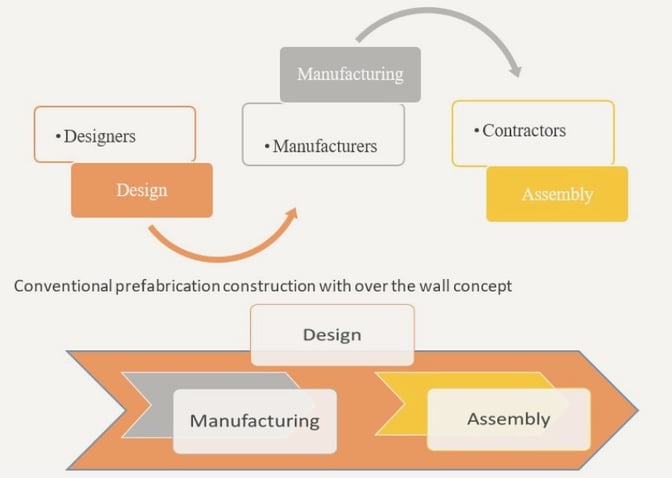
Source: Buildings; DfMA, Two Steps of One Continuous Process
Design for Manufacturing and Assembly (DfMA) in construction is a set of principles and methodologies that designers use during the conceptualization stage of a project whereby components are designed in a way that is as responsive as possible for downstream manufacturing and assembly. The design is created with a clear idea of the materials to be used, construction methods, and plans regarding where and how each component will be assembled. DfMA in construction has been interpreted from three perspectives: (1) a holistic design process that encompasses how building structure or components will be manufactured and assembled guided by DfMA principles; (2) an evaluation system that can work with virtual design and construction (VDC) to evaluate the efficiency of manufacturing and assembly; and (3) a game-changing philosophy that embraces pre-manufacturing and modular construction technologies.
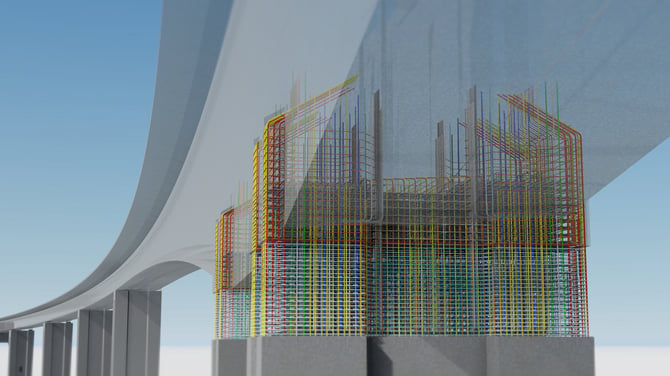
Source: Trimble; World's Longest Bridge Built Entirely Using VDC and MMC
DfMA also involves creating a realistic model of the building that can be explored and tested for defects and improvements before the construction of the actual structure begins. Moreover, by using 3D BIM models and VDC, designers can create a virtual asset model to digitally plan out all aspects of a construction project.
The benefits of Design for Manufacturing and Assembly
Design for Manufacturing and Assembly (DfMA) application in the construction and real estate industry provides both short-term and long-term advantages. DfMA offers new solutions to maximize operational efficiency while reducing construction costs. Some of the benefits of DfMA are:
- Reduced Cost: Using technology for more efficient design & manufacturing processes can help reduce costs.
- Reduced Schedule: Designing DfMA components can minimize site assembly time and overall project schedule by overlapping factory and site activities.
- Improved collaboration: DfMA helps streamline the supply chain and reduce the risk of disputes. It also motivates more collaboration on pre-construction work and encourages environmental consciousness.
- Improved Site Safety: Using digital models to test DfMA components for safe assembly, maintenance, and fabrication in controlled factory environments can result in fewer safety incidents.
- Improved Environmental Performance: Using standardized elements and factory fabrication can help track the carbon footprint.
- Reduced Waste: More efficient use of materials in component designs and testing in digital models can reduce site waste.
- Reduced Labour: Planning and scheduling with DfMA enable more efficient deployment of resources.
- Higher Productivity and Quality: Building DfMA components digitally in a factory environment reduces labor reworks, improves productivity and ensures better quality work.
- Ease of Reuse and Deconstruction: Reduced resources are required to dismantle or remove components to reconfigure buildings or deploy them elsewhere.
Another not less significant advantage of DfMA in construction development is its innovative approach that can help win new clients and achieve higher ROI. This is one of the main reasons it's quickly becoming a popular concept in today's modern companies.
"it is unlikely that any one particular technology will disrupt construction on its own. Rather, it's more likely that a confluence of trends will enable established technologies to be used in new, disruptive ways. This shift—from simple disruption due to a specific technological innovation to complex disruption stemming from a convergence of technological and nontechnological trends—can be seen across many industries".
Deloitte; Digitalizing the construction industry, 2019
3D Modeling in the design process
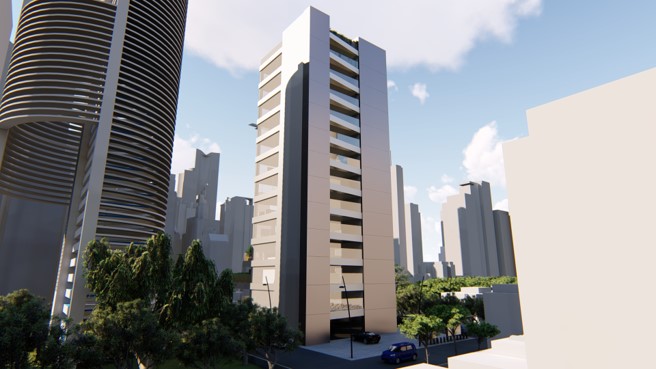
Source: Construct360; 3D Model Next Project
Designers who have adopted a DfMA approach use 3D modeling extensively throughout their design process. This helps them analyze and solve complex design problems before moving to 2D drawings. For example, during the conceptual design phase, designers use 3D Modeling to simulate various systems and identify any functional, operational, and maintenance issues that may arise during the life cycle of the building. Construction, engineering and procurement teams also extensively use 3D Modeling to analyze the manufacturing process and determine the sequence of activities. This helps them reduce the variability during construction, resulting in better quality and reduced costs.
An integrated 3D modeling and BIM software platform allow you to create consistent, accurate, and parametric design models. - Using a naming convention and visualization standards that ensure that the models are consistent across the design and construction team. - Automating the workflow and using plugins and add-ons that allow designers to use the best practices right from the start of the design process.
3D Modeling has become an essential part of the design process in construction. It allows designers to create a virtual life-like model of how the building would look like. This model has all the necessary details, such as lighting, textures, and sound. It allows designers to view the building from different angles and the impact it would have on the surrounding environment. It also allows designers to consider the impact the construction of the building would have on the environment. Designers can use 3D Modeling to create a complete documentation of the building. This documentation includes details about the materials used, the design of each component, and how it is to be assembled. This documentation is essential when it comes to project lifecycle management.
Generative Design in AEC
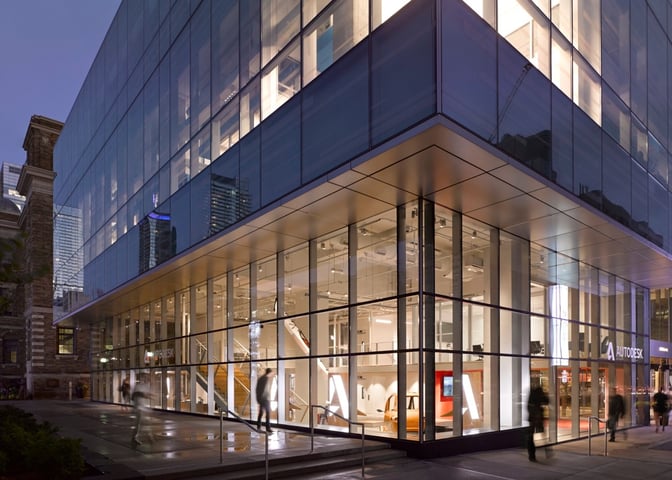
Source: Autodesk; Toronto Offices Generative Design in Practice
Generative or parametric design is a programming algorithm that enables architects and engineers to design buildings more flexibly, efficiently and quickly than ever before. This is achieved through code-based designs that can be easily modified and reused instead of the traditional drawing-based process that often requires significant time and effort to make changes to a design. In addition, generative models are being used to test multiple new iterations of a proposed design in rapid succession. That simulates an evolutionary trial-and-error approach to design.
Generative design can help design for DfMA by taking the BIM model or 3D model further and creating a construction sequence. This involves many simulations to determine the best sequence of activities. It also consists of optimizing construction materials and resources, which can sometimes be challenging. In addition, these tools can help designers achieve better coordination between contractors and suppliers and straightforward communication during construction. Finally, generative design software is also helpful in creating parametric models that can easily be adapted to suit the construction site's needs.
DfMA and Immersive Design Collaboration
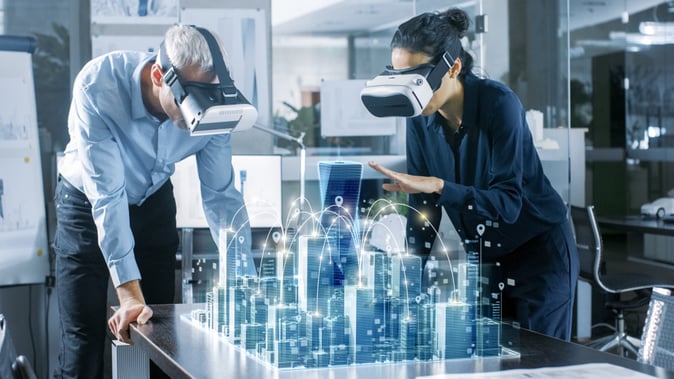
Designers and project stakeholders benefit from immersive interaction in design and construction. With the advent of Virtual Reality (VR) and Augmented Reality (AR) technologies, the design process has evolved significantly. VR and AR can be used for various design tasks, such as prefabrication and assembly, visualization, and DfMA, as well as for creating immersive experiences for users. VR and AR can help understand the design intent and its context in the surroundings when used for design and construction. This helps communicate the design to stakeholders who might be in different locations. In addition, with the advancement of immersive design collaboration tools, designers can now create immersive sequences to show how their designs will look and how they will be constructed. This can be done by importing the building information model into VR, AR, or MR tools and creating immersive sequences using timelines and storyboards.
DfMA and Modern Methods of Construction (MMC)
"Modular offsite construction thus involves significant integration of the design, fabrication, and construction phases of a building project. A key reference for this approach is Design for Manufacture and Assembly (DfMA), a concept based on a holistic understanding of the production process, emphasizing design that facilitates the fabrication, shipment, and installation of a product. Applying this idea to modular buildings, project teams not only design the building's various elements, but they also plan the process of how those elements will be manufactured, moved to the site, and assembled."
AIA; Design for Modular Construction 2019
When designing for manufacture and assembly and MMC, the designer must find the best way to meet the client's requirements by considering the most efficient way to manufacture elements of the building and the most efficient way to assemble them on site. Manufacturing and assembly processes can be carried out in offsite or near-site factories, consolidation centers, and the site itself.
While the focus of this article has been on design and construction, there is also a need to understand modern methods of construction. A recent article by Architecture Today reports that many designers remain wary and critical of how manufacturing underpins Modern Methods of Construction (MMC) and design for manufacture and assembly (DfMA). This is surprising since many current construction practices are time-consuming and inefficient. What better time than now to implement some of the techniques used in modern methods of construction in your design workflow? These include:
- Collaborative design: Design is a team activity, and to be successful, the team must work together effectively. This can be achieved through collaborative design software that allows designers and stakeholders to work together in real time.
- Design optimization: This includes optimizing the design for sustainability, constructability, and cost. Designers have been leveraging BIM and new technologies to help optimize design, reduce the number of iterations, rework, and communication time, and create more detailed designs that can be easily shared remotely with design team members and contractors.
- Integrated Project Delivery (IPD): IPD is a collaborative approach to design and construction and refers to the seamless integration of project planning, managing, and executing the design and construction activities.
- Integrated design and construction software: The use of integrated design and construction cloud software allows for a seamless exchange of design and construction information throughout the design process. Designers have been leveraging BIM and the Cloud to create more detailed designs that can be easily shared remotely with design team members and contractors, regardless of where it is stored. This helps in managing workflow and reducing rework and error rates.
DfMA and Automation of Construction Processes
Introducing new technologies into the construction process is expected to lead to further automation of the manufacturing and assembly process. As robots, drones, and AI and ML technologies advance, manufacturers have begun to explore ways to automate construction processes. Since these technologies can execute complex tasks with high precision and minimal error, there has been a significant shift in the focus of DFMA from design to implementation. Recent research has focused on integrating AI technologies into construction processes, aiming to improve both safety and efficiency. These technologies include AI-enabled drones that can autonomously survey construction sites and analyze potential risks and AI-powered robots that can assist with construction tasks like welding. And AI software can manage construction schedules, optimize resources, and forecast potential issues.
Design for Manufacturing and Assembly (DfMA) existed before the advent of Artificial Intelligence and Machine Learning. As a result, new practices will likely emerge as these technologies become more widely used within design and construction. However, it's important to note that DFMA is not going away. Instead, it will act as the foundation for new practices that will help to make the design process more integrated.
Limitations of current DFMA practices in construction
While design for manufacturing and assembly is hugely beneficial for projects, it's important to note that it is not yet being practiced in a truly integrated way. Some of the most significant limitations of current DFMA practices include:
- Overlooking the Design Team: Companies often overlook the importance of the design team. Unfortunately, this means that teams lacking the appropriate design skills must pick up the slack by creating overly complex digital designs.
- Focusing on Traditional Manufacturing Processes: Many current DFMA practices have been created based on lean manufacturing principles. However, lean manufacturing is based on manual processes that are now being digitalized.
-
Difficulty Integrating project data and processes: While each process in DFMA is essential, they need to work together as part of an integrated process. Regrettably, this isn't happening right now due to a lack of data integration and collaboration between project teams.
Conclusion
DfMA is a design-with-purpose [1] approach developed to find the best way to meet the client's requirements by considering the most efficient way to manufacture elements of the built asset and the most efficient way to assemble them on site. It's about designing a capital project that solves problems, meets needs, and drives benefits related to cost and program, quality, productivity, health and safety, and sustainability.
The future of design and construction depends on how designers and builders collaborate and use Modern Methods of Construction (MMC). This includes adopting Design for Manufacturing and Assembly (DfMA) concepts and collaborating throughout the design and construction process.
Connectivity has come to construction. DfMA and MMC are transforming boundaries. Bashar, the founder of the Construct360 system, can help orchestrate your company's digital transformation and implementation of DfMA, explaining which connected strategies should work best for you. Is your team ready?
Design for Manufacturing and Assembly (DfMA) is one of the change catalysts and enablers in the Construct360 practical approach to digital transformation in construction and real estate development companies.
[1] The purposeful design aims to create architecture that is wholly responsive to its users, site, context, and environment.
